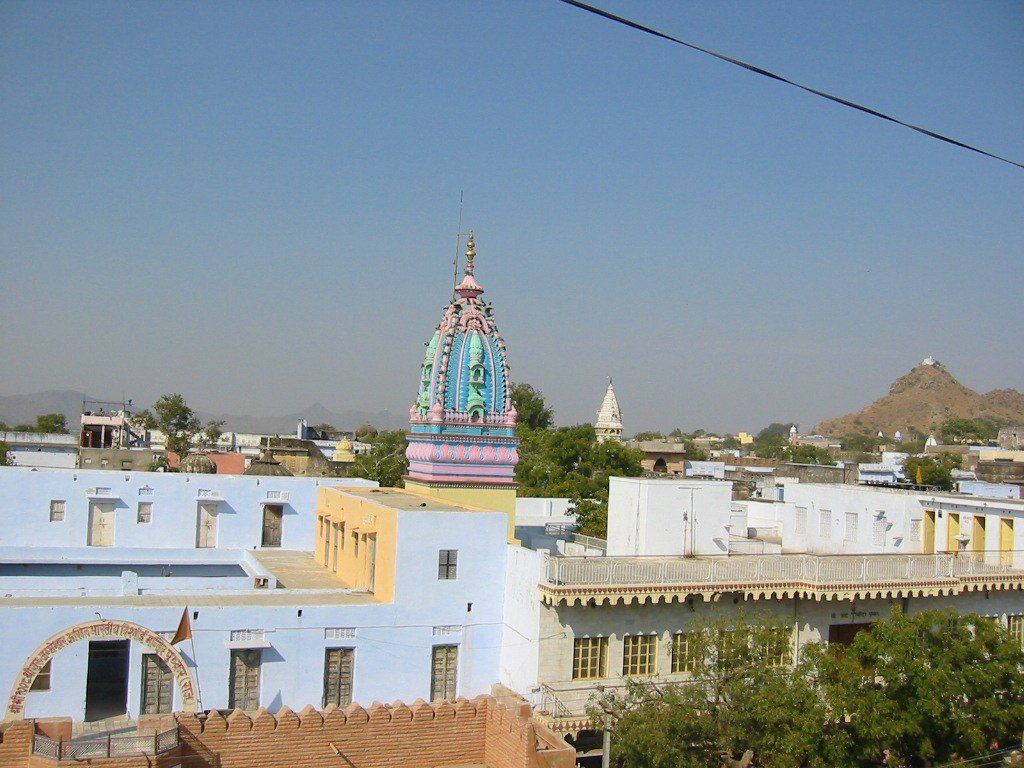
Temples of Pushkar
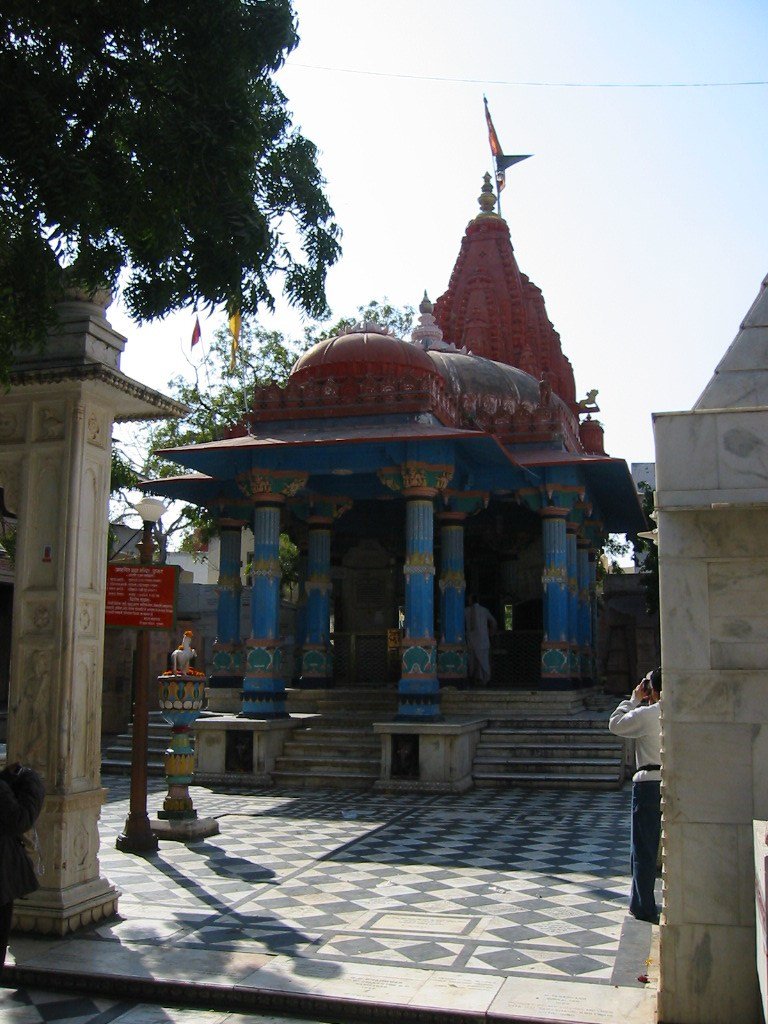
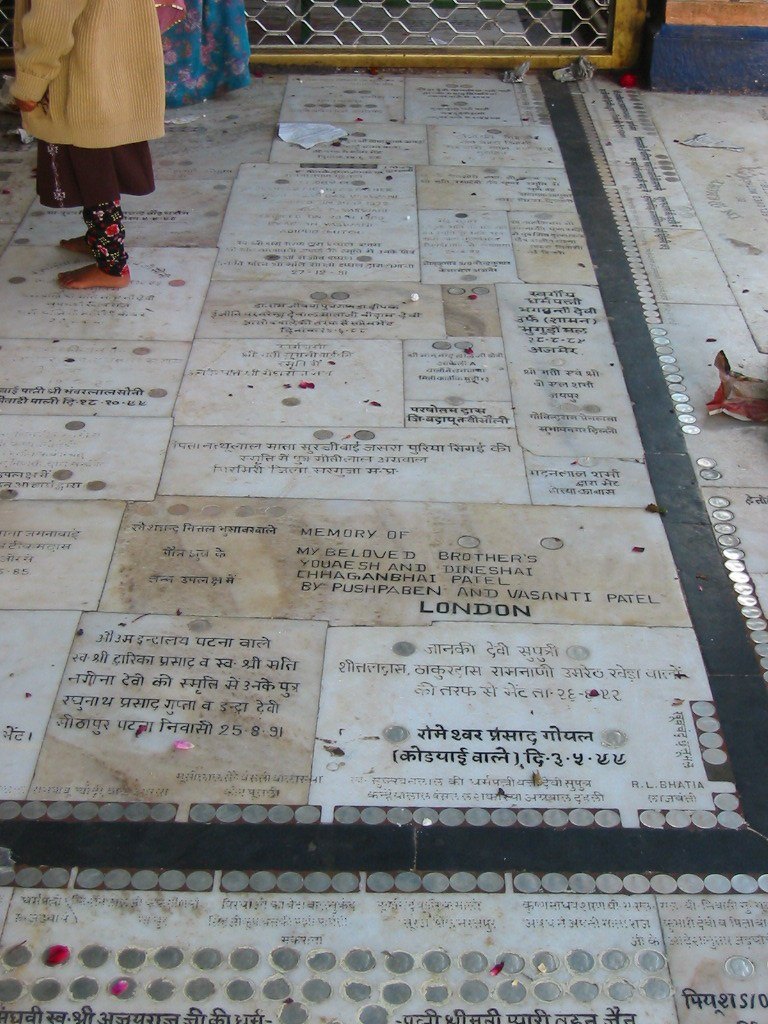 The number of temples in
Pushkar are too numerous to count, and time permitted us a
visit to only three of the many important sites in this
pilgrimage town. The Brahma temple, located at the end of
Pushkar's busiest street, is probably the most important.
Access to the temple is gained by ascending a large stairway
from street level. This opens onto a small platform which
contains the image house or inner sanctum of the temple,
featuring a four-armed life-sized image of Brahma (photo to
the left). Unfortunately, the inner sanctum was not open for
worship the day we visited, so we had to content ourselves
with viewing its colorful exterior. Another interesting
feature are the coins embedded in the floor of the temple,
around the inner sanctum. They are placed their by devotees
from all over India to commemorate the births and deaths of
loved ones. An example is shown in the photo to the right.
The number of temples in
Pushkar are too numerous to count, and time permitted us a
visit to only three of the many important sites in this
pilgrimage town. The Brahma temple, located at the end of
Pushkar's busiest street, is probably the most important.
Access to the temple is gained by ascending a large stairway
from street level. This opens onto a small platform which
contains the image house or inner sanctum of the temple,
featuring a four-armed life-sized image of Brahma (photo to
the left). Unfortunately, the inner sanctum was not open for
worship the day we visited, so we had to content ourselves
with viewing its colorful exterior. Another interesting
feature are the coins embedded in the floor of the temple,
around the inner sanctum. They are placed their by devotees
from all over India to commemorate the births and deaths of
loved ones. An example is shown in the photo to the right.
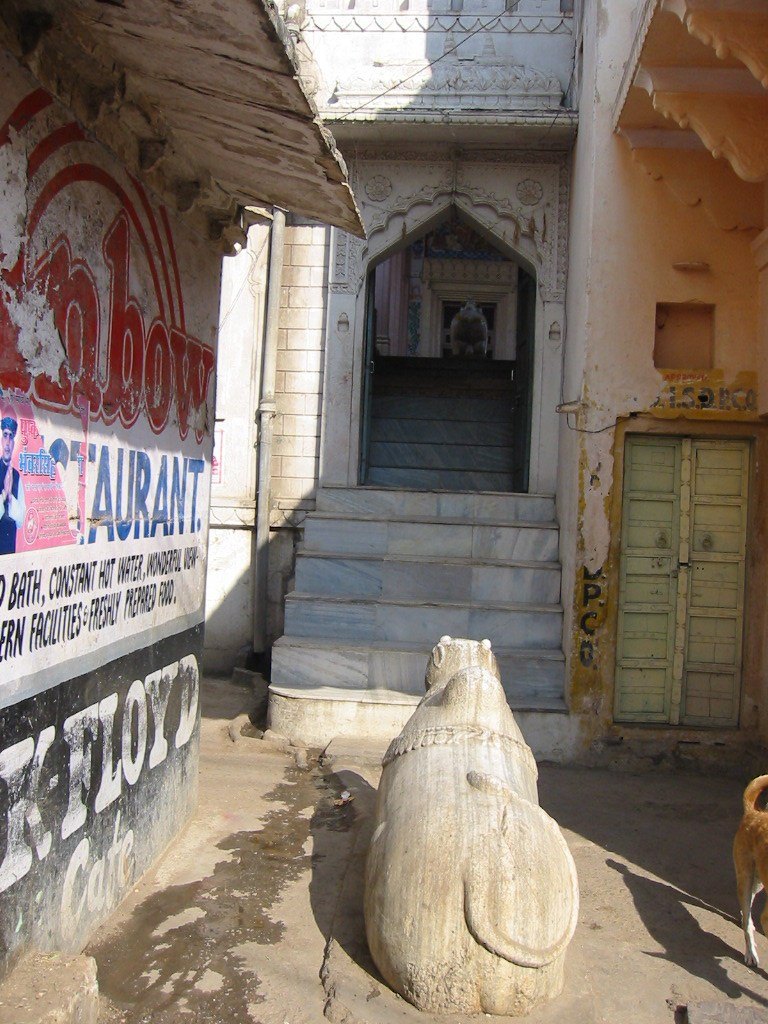
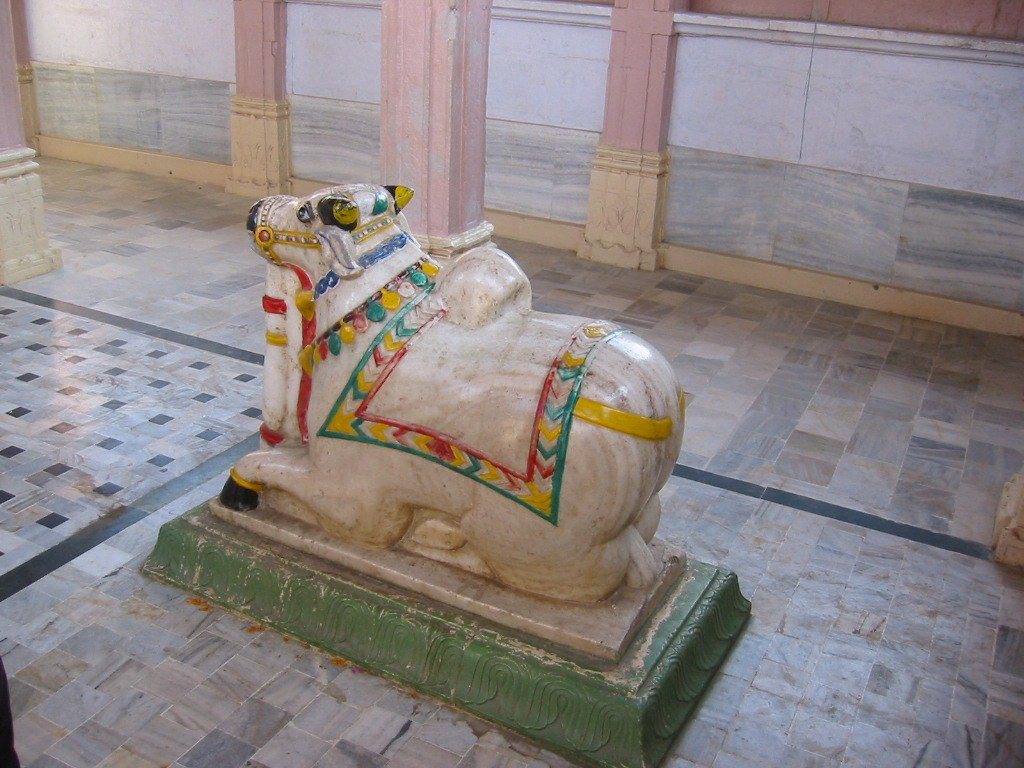 Not far from the Brahma
temple is the Mahadeva temple, tucked away on a side street,
identifiable only by the cow statue visible from the street
(photo to the left). A beautiful temple built in the 19th
century, it was described by a British traveler of the time as
"by far the most remarkable, for the elegance of its structure
and the nature of its temple, of all temples Pushkar boasts
of." The temple itself is small, consisting of a tiny interior
courtyard with an small shrine. The courtyard has a polished
marble floor that contains a more ornate version of the sacred
cow that serves as a street marker for the temple. This
version is shown in the photo to the right. The courtyard
itself is shown in the photo at the lower left. It is covered
by a series of pink pillars, supporting a beamed roof; both
the roof and beams are hewn marble and elaborately decorated.
The pillars and beam demarcate a path that leads to the inner
sanctum or shrine, shown in the photo
Not far from the Brahma
temple is the Mahadeva temple, tucked away on a side street,
identifiable only by the cow statue visible from the street
(photo to the left). A beautiful temple built in the 19th
century, it was described by a British traveler of the time as
"by far the most remarkable, for the elegance of its structure
and the nature of its temple, of all temples Pushkar boasts
of." The temple itself is small, consisting of a tiny interior
courtyard with an small shrine. The courtyard has a polished
marble floor that contains a more ornate version of the sacred
cow that serves as a street marker for the temple. This
version is shown in the photo to the right. The courtyard
itself is shown in the photo at the lower left. It is covered
by a series of pink pillars, supporting a beamed roof; both
the roof and beams are hewn marble and elaborately decorated.
The pillars and beam demarcate a path that leads to the inner
sanctum or shrine, shown in the photo 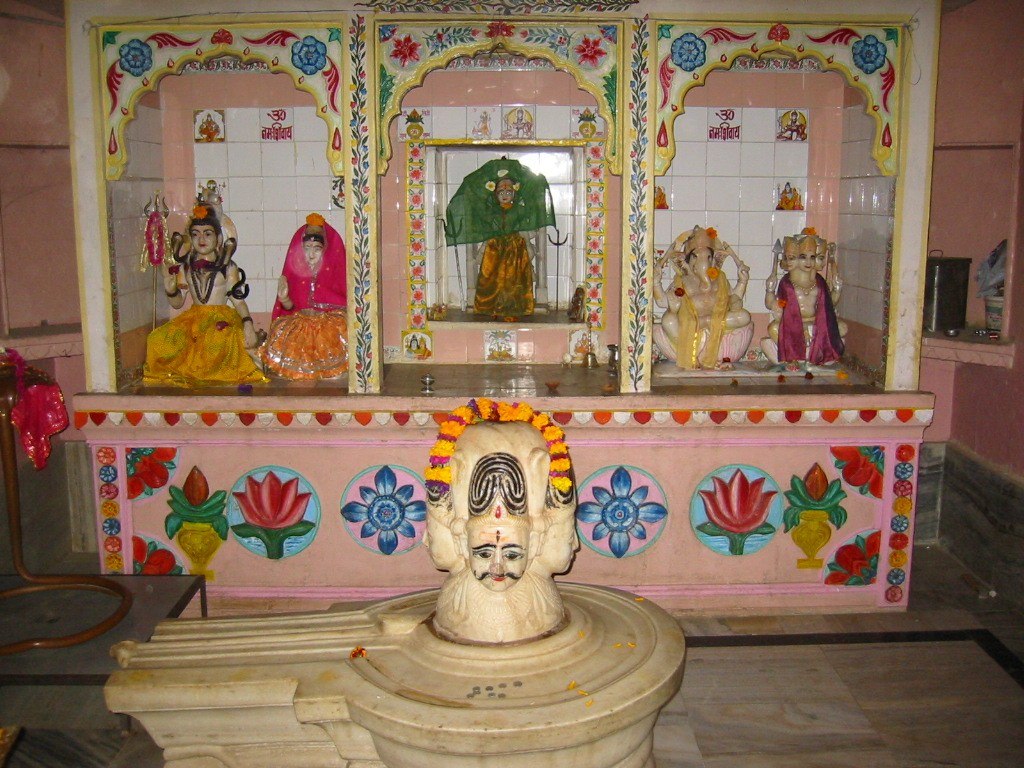 at
the bottom right. The shrine room is typical of the Hindu
altars, bursting with color and adorned with numerous icons. A
background altar contains a pantheon of Hindu
at
the bottom right. The shrine room is typical of the Hindu
altars, bursting with color and adorned with numerous icons. A
background altar contains a pantheon of Hindu 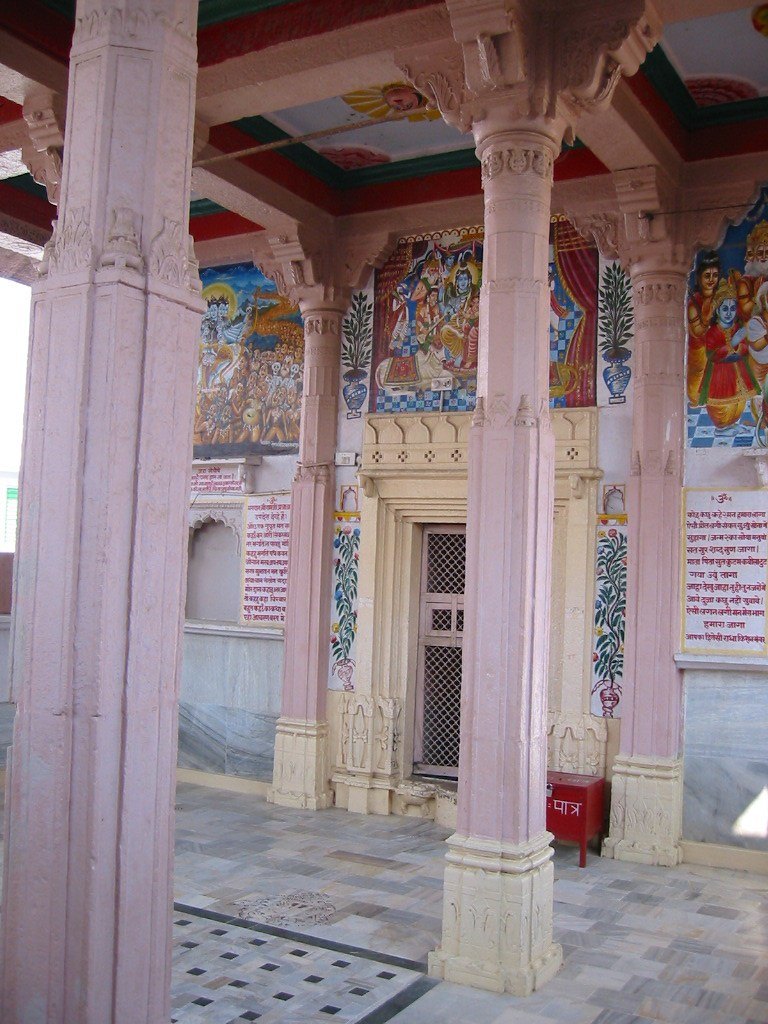 deities,
including the ever-popular elephant-headed Ganesh, while in
the foreground, resting on its own pedestal is the primary
deity of the temple the 5-faced Mahadeva icon.
deities,
including the ever-popular elephant-headed Ganesh, while in
the foreground, resting on its own pedestal is the primary
deity of the temple the 5-faced Mahadeva icon.
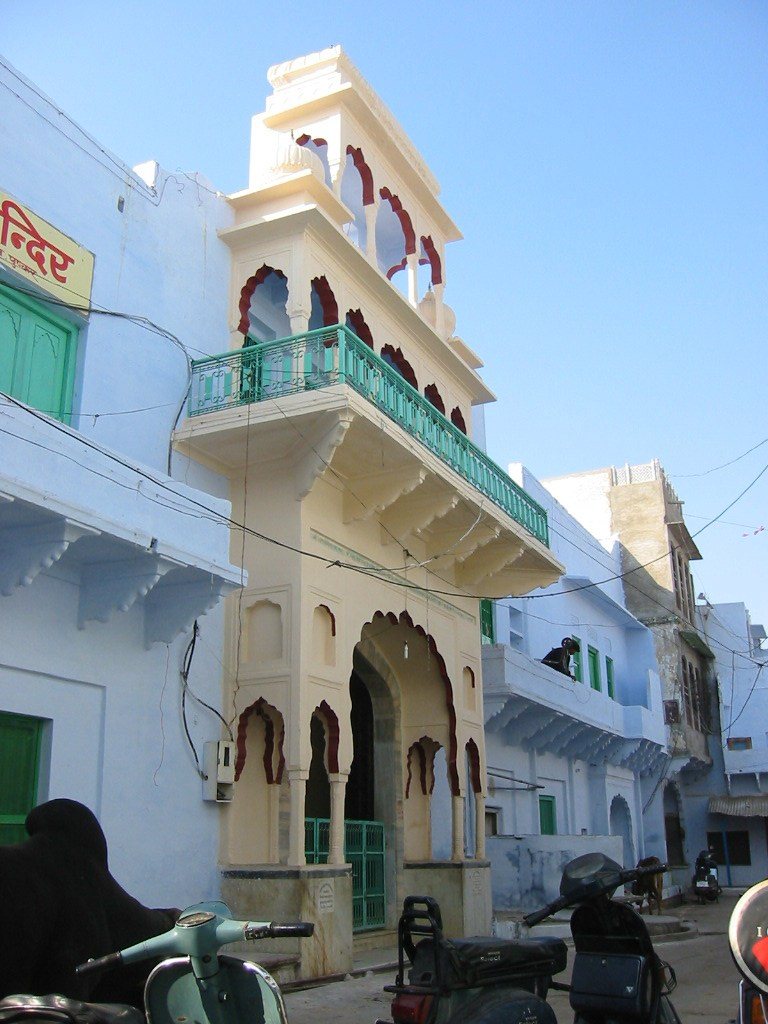
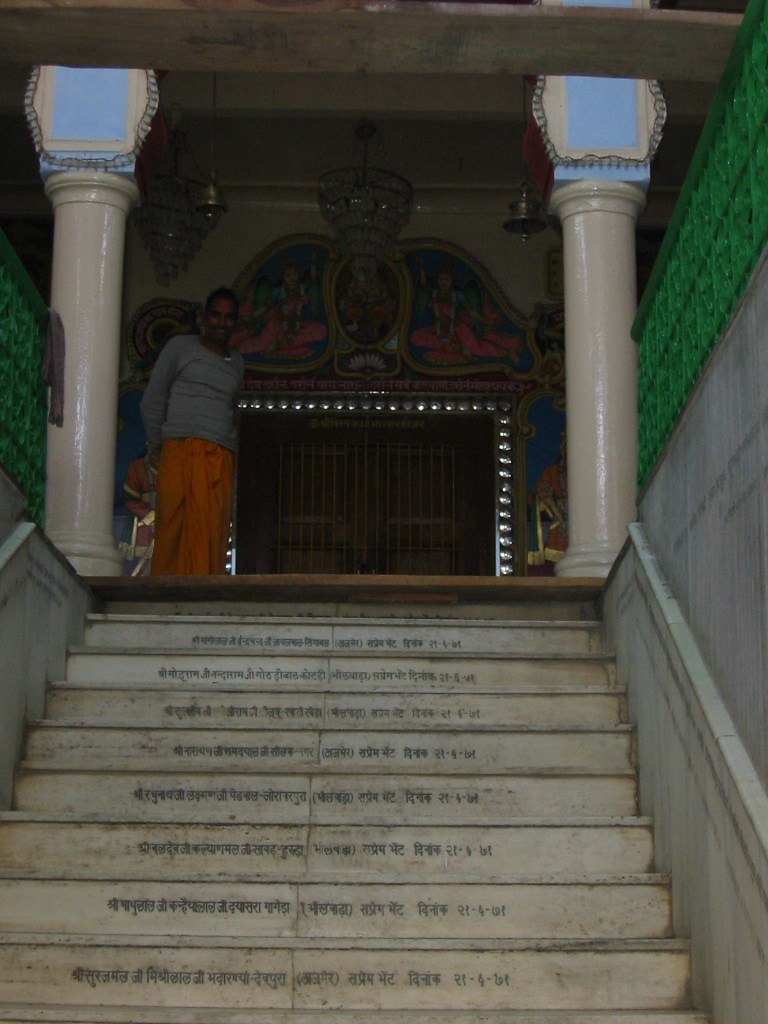 Just a few blocks over from
the Mahadeva temple lies the Varah Temple, the last of the
three major shrines we were able to visit during our brief
stay. Originally built in the 12th century, Varah Temple
was, like many others, destroyed by the religious Mughul
zealot, Aurangzeb. It was said that he was particularly
upset by the huge idol of Varah, a god with the body of a
man and the head of a boar. Apparently this was just too
much for a man whose faith tolerated no images of man or
beast, let alone both in one incarnation! Reconstructed by
the warrior/astronomer Sawai Jai Singh II (of Jaipur and
Jantar Mantar fame), the temple has an interesting and
richly ornamented image house. The photo to the left shows
the entrance to the Varah temple. Architecturally, it is
similar to the entrance to the Pushkar Palace, both in terms
of design and color scheme. Like the Mahadeva and Brahma
temples, The Varah temple is built above street level and
consists of a small central courtyard fronting an image
house. The design of the temples not only conserves valuable
merchant space on the street, but also indicates that the
temple was indeed a part of the daily life of the merchant, who could easily
temporarily abandon the bustle of their daily life for the
solitude of the temple.
Just a few blocks over from
the Mahadeva temple lies the Varah Temple, the last of the
three major shrines we were able to visit during our brief
stay. Originally built in the 12th century, Varah Temple
was, like many others, destroyed by the religious Mughul
zealot, Aurangzeb. It was said that he was particularly
upset by the huge idol of Varah, a god with the body of a
man and the head of a boar. Apparently this was just too
much for a man whose faith tolerated no images of man or
beast, let alone both in one incarnation! Reconstructed by
the warrior/astronomer Sawai Jai Singh II (of Jaipur and
Jantar Mantar fame), the temple has an interesting and
richly ornamented image house. The photo to the left shows
the entrance to the Varah temple. Architecturally, it is
similar to the entrance to the Pushkar Palace, both in terms
of design and color scheme. Like the Mahadeva and Brahma
temples, The Varah temple is built above street level and
consists of a small central courtyard fronting an image
house. The design of the temples not only conserves valuable
merchant space on the street, but also indicates that the
temple was indeed a part of the daily life of the merchant, who could easily
temporarily abandon the bustle of their daily life for the
solitude of the temple.  The
The
 photo
at the bottom left shows the exterior of image house; it was
closed when we visited, so we were not able to get a glimpse
of the Varah icon that so upset Aurangzeb the Cruel.
The emphasis upon the sacred is likely to give those who
have not visited Pushkar to think of it as a purely sacred
site, but it is true that it is a working, secular city,
filled with the hustle and bustle of everyday life. The
photo at the bottom right shows the street scene just meters
from the temple.
photo
at the bottom left shows the exterior of image house; it was
closed when we visited, so we were not able to get a glimpse
of the Varah icon that so upset Aurangzeb the Cruel.
The emphasis upon the sacred is likely to give those who
have not visited Pushkar to think of it as a purely sacred
site, but it is true that it is a working, secular city,
filled with the hustle and bustle of everyday life. The
photo at the bottom right shows the street scene just meters
from the temple.
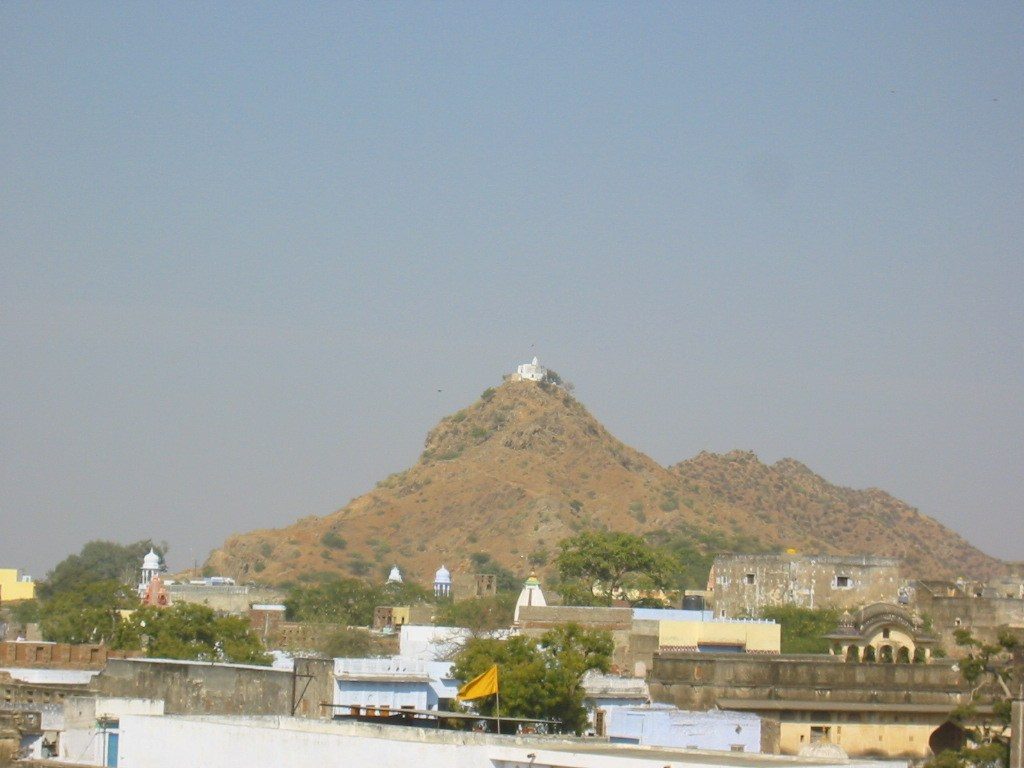 There
is one temple that is not easily accessible, but which is
certainly visible from nearly everywhere in Pushkar. That is
the mountain temple of Savitri, the consort of Brahma. It is
believed that when she discovered Brahma had hastily married a
local maiden to complete the sacred blessing on the newly
created site, she cursed him and flew in rage to a nearby hill
to stew over events. This hill still bears a temple devoted to
Savitri.
There
is one temple that is not easily accessible, but which is
certainly visible from nearly everywhere in Pushkar. That is
the mountain temple of Savitri, the consort of Brahma. It is
believed that when she discovered Brahma had hastily married a
local maiden to complete the sacred blessing on the newly
created site, she cursed him and flew in rage to a nearby hill
to stew over events. This hill still bears a temple devoted to
Savitri.